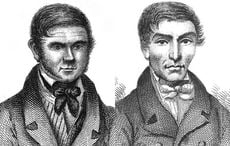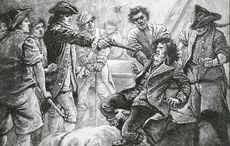After the Great Hunger, 4,000 young, destitute Irish women were sent from overcrowded workhouses in Ireland to Australia, where they became pioneers of a new colony.
This maneuver, which lasted two years (1848-1850), was called the Earl Grey Scheme after the son of the famous tea merchant who had been secretary of state for the new British colonies.
Irish author Kay Moloney Caball grew up near a workhouse in Listowell, Co. Kerry, and was completing coursework in history of family and genealogical methods at the University of Limerick when she happened upon the Earl Grey Scheme.
“I was always interested in how my own family got on during the famine. I started researching that, and came across a book by Michael Guerin, "Listowel Workhouse Union," in which he mentioned the scheme,” she told Rosita Boland of the Irish Times.
Caball focused primarily on Kerry for her book, "The Kerry Girls: Emigration and the Earl Grey Scheme," published in 2o14. One hundred and seventeen Kerry women across four workhouses were supplied with clothing and food to travel to Australia and helped to build the colonies at Sydney, Melbourne and Adelaide.
“Carefully piled up on chairs around us in the library are archive boxes, each of which contain thick, leather-bound books containing minutes of the board of guardians from various workhouses in Kerry in the 1840s,” Boland said of their interview.
“Each book of minutes is the size of a tabloid newspaper and two inches thick, and contains so much information that the first one I pick up covers only three months in the life of one workhouse.”
In her studies, Caball found that the women, who were mostly between ages 14 and 20, were not forced to emigrate. In fact they had to apply, and be chosen – they had to seek character references and undergo medical examinations.
“I asked myself at the beginning: was it a tragedy or an opportunity that 4,000 girls went to Australia from Ireland? They would almost certainly have had no concept of how far away it was.
“But I would have to say it was a fantastic opportunity. If they had stayed in Ireland, they would either have died in the workhouse, or had a very low standard of living, because things didn’t improve economically for decades.”
The new colonies of Australia benefitted greatly from the women; transportation of convicts to Australia had just ended the year before, and they were in dire need of more settlers. Also, in the eyes of Imperial social engineers, the (unmarried) women would bring a stabilizing influence to the rough, masculine colonial societies.
The workhouses provided them with boxes of clothing, and the trip itself was paid for by colonial funds from the Australian people.
In the records Caball found that there were about 150 applications from each of the four participating Kerry workhouses: 37 went from Listowel, 35 from Killarney, 25 from Kenmare and 20 from Dingle.
The journey to Australia took four months; one person died on the journey overall.
Because the women were uneducated and inexperienced, “[m]ost of them went into service or got married soon after arriving. They lived in the bush or went to the goldmines,” Caball said. “They became pioneering women.”
Australia recognizes the 4,000 women of the Earl Grey Scheme as key contributors to Australian society. They left a lasting legacy, and are seen as symbols of refugees from the Great Hunger.
The names of all 4,000 women are recorded in the Irish famine memorial in Sydney. Various databases in Australia carry detailed information about them, and Australian historians have been able to reconstruct the stories of many of their lives.
*Originally pubished in 2014




Comments